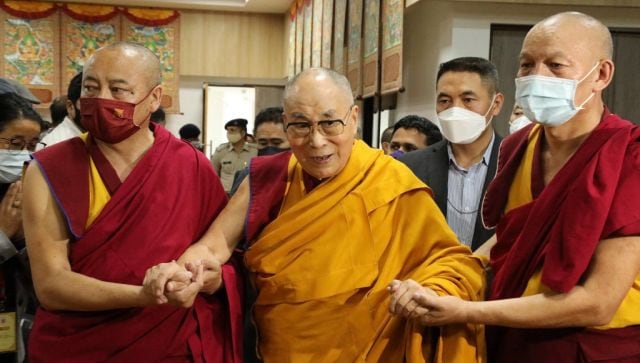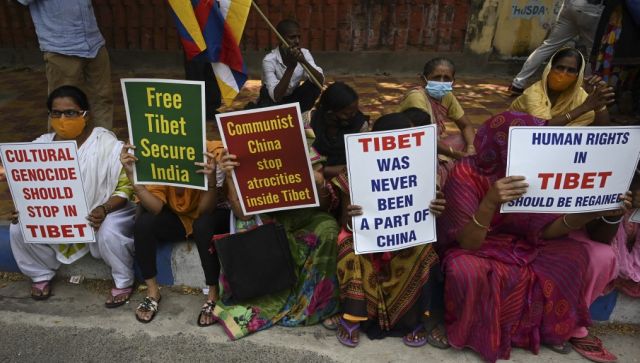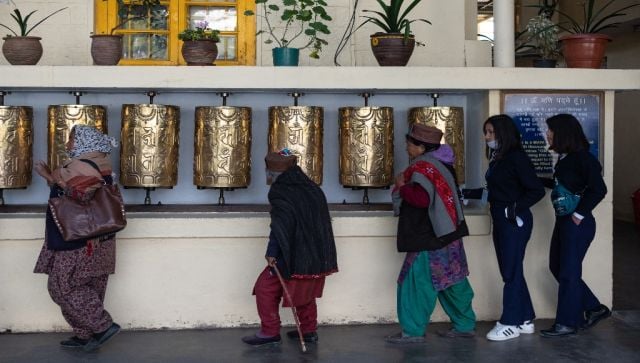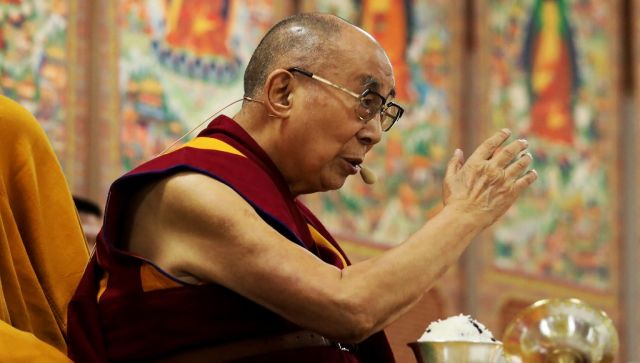The Dalai Lama will visit Leh on 15 July – his first major tour in two years since the pandemic began in 2020. The trip, which is expected to last a month, comes amid growing tensions between India and China over the standoff in eastern Ladakh. The Tibetan spiritual leader’s visit to the region in 2018 earned China’s ire and this time too, Foreign Ministry spokesman Zhao Lijian told the media that “the Indian side should fully recognise the anti-China separatist nature of the 14th Dalai Lama”. It should abide by its “commitment to China, speak and act prudently and stop using Tibet-related issues to interfere in China’s internal affairs,” he added. But what exactly is China’s problem with the Dalai Lama? The revolt and exile The 14th Dalai Lama, Tenzin Gyatso, is the spiritual head of Tibet and until nine years ago, he was also the political head. In 2011, he relinquished his political role, a position the Dalai Lamas have enjoyed since the fifth leader, Lobsang Gyatso (1617-82). The Dalai Lama, Gyatso, was made the head of state at the age of 15 in 1950, the same year Chinese troops occupied Tibet. He held talks with Chinese officials on self-rule in Tibet but with no success. After a failed revolt against the Chinese, he fled Tibet in 1959 and has been in exile in India since. He now lives in Himachal Pradesh’s Dharmasala. The China-Tibet clash Since the annexation, Tibet is governed by China. While Beijing claims a centuries-old sovereignty over the mainly Buddhist Himalayan region, the allegiance of a majority of Tibetans lies with the Dalai Lama. The monk has time and again call for autonomy in Tibet, even as Beijing has interfered with Tibetan Buddhism and persecuted locals. Government-sponsored migration of the Han Chinese, the country’s largest ethnic group, continues with the aim to make the Tibetans a minority. Many in Tibet believe that their culture and religious freedom are under attack. Some often resort to extreme measures like self-immolation to protest the Chinese rule. However, the Communist Party of China (CPC) leadership has refuted allegations of human rights violations in Tibet, saying that it respects the rights of the people, claiming that the development it has ushered in has raised living standards in the region. Yet, for China, legitimising its claim over Tibet has been an ongoing concern. [caption id=“attachment_10911871” align=“alignnone” width=“640”]  The Dalai Lama says that he does not want freedom but autonomy for Tibet. AFP[/caption] The Dalai Lama’s call for autonomy The Dalai Lama has maintained that he is not pushing for independence for Tibet. What he wants is the autonomy that will allow Tibetans to preserve their culture, language and religion under China’s rule. “We are not seeking independence. We want China to give us meaningful autonomy. We want to remain with the People’s Republic of China,” the leader said in 2017. “Tibet is materialistically backward but spiritually highly advanced. We want to develop materialistically by remaining with China and it should see the same way for mutual benefit,” he had added. China’s grudge The Tibetan government in exile, which also has its office in Dharmasala, is not recognised by any country. However, the Dalai Lama remains revered. Tibetans across the world consider him their spiritual leader. A celebrated figure worldwide, he even received the Nobel Peace Prize in 1992. He has given speeches in parliaments and some of the world’s top universities; heads of state have great admiration for him. From CEOs to celebrities, he is looked up to by one and all and his soaring popularity is a big bother for Beijing. “The Chinese find it unacceptable when they see the Dalai Lama treated as a VIP, or even akin to a head of state because they view it as a challenge to China’s national sovereignty and claim over Tibet,” David Shambaugh, a professor of political science and international affairs at George Washington University told CNN ahead of the leader’s US visit in 2010 when he met then-President Barack Obama at the White House. Even though, the Dalai Lama maintains that “meaningful autonomy” is the only realistic solution to the Tibetan issue, China is not convinced. They believe that at meetings with world leaders he is pushing his political agenda. [caption id=“attachment_10911901” align=“alignnone” width=“640”]  Activists hold placards during a protest against the Chinese invasion in Tibet next to the Chinese consulate in Kolkata. AFP[/caption] ‘A wolf in monks robes’ Since the 1959 uprising, Beijing has shown no faith in the monk. Chinese officials consider him a “wolf in monk’s robes” and a dangerous “splittist”. In 2008, the Chinese Communist Party chief of, Tibet Zhang Qingli, vilified the Dalai Lama as a “wolf in monk’s robes”, “double-dealer” and a “secessionist chief” who is seeking separation of the region from the Communist nation. In 2011, he reiterated his allegations and said that the Dalai Lama “has had done things beneath his status.” Beijing’s relentless criticism of the leader continues and now his succession has turned into a political battle between Tibet and China. The tussle over the next Dalai Lama The Dalai Lama has said that his successor might be a woman and could be born in a free country. Traditionally, the current Dalal Lama picks the next one and tells his aides where to look for the child who will be an incarnation. “The person who reincarnates has sole legitimate authority over where and how he or she takes birth,” says the Dalai Lama’s website. But China has plans of its own. It insists that the choice of the next Dalai Lama lies only with China, and has even enshrined this right into the law. In 2011, the Chinese foreign ministry declared that its government can pick the next Dalai Lama and that no recognition should be given to any other succession candidate. This is yet another way for Beijing to impose control on the region. However, the Dalai Lama is confident that no one would trust the Chinese government’s choice. In April 2019, US Senate Cory Gardner said at a hearing of the Senate Foreign Relations Asia Subcommittee that Congress would not recognise a Dalai Lama chosen by the Chinese government, reports The Conversation. [caption id=“attachment_10911911” align=“alignnone” width=“640”]  Visitors spin Tibetan prayer wheels at the Dalai Lama Temple complex in McLeod Ganj in Himachal Pradesh. AFP[/caption] India vs China As relationships with China deteriorate, the Indian government is strengthening its policy over Tibet. In 2021, Prime Minister Narendra Modi wished the Dalai Lama for his birthday on Twitter in what was seen as a “significant departure” from the previous policy. This year, the PM called up the leader for his birthday and his public acknowledgement is yet another message to the neighbouring nation. Beijing is not the one to back down. In August 2021, Chinese President Xi Jinping visited Tibet in the wake of a new policy for the region with an emphasis on “stability, development, ecology and border area consolidation”. The strengthening of borders assumes significance after the clashes in Ladakh between Indian and Chinese troops. There is increased infrastructure development in Tibet, especially near the India-China border in the Arunachal Pradesh sector, reports ThePrint. Now the Dalai Lama’s visit to Ladakh is only going to unnerve China. It remains to be seen how this further impacts ties between Beijing and New Delhi, but as former foreign secretary Shyam Saran said, “Tibet won’t remain a side issue for long” between the two countries. With inputs from agencies Read all the Latest News , Trending News , Cricket News , Bollywood News , India News and Entertainment News here. Follow us on Facebook, Twitter and Instagram.
The Dalai Lama will be in Leh for a month starting tomorrow. This is his first major visit since the COVID-19 outbreak and comes amid deteriorating ties between India and China over clashes in eastern Ladakh
Advertisement
End of Article


)

)
)
)
)
)
)
)
)



